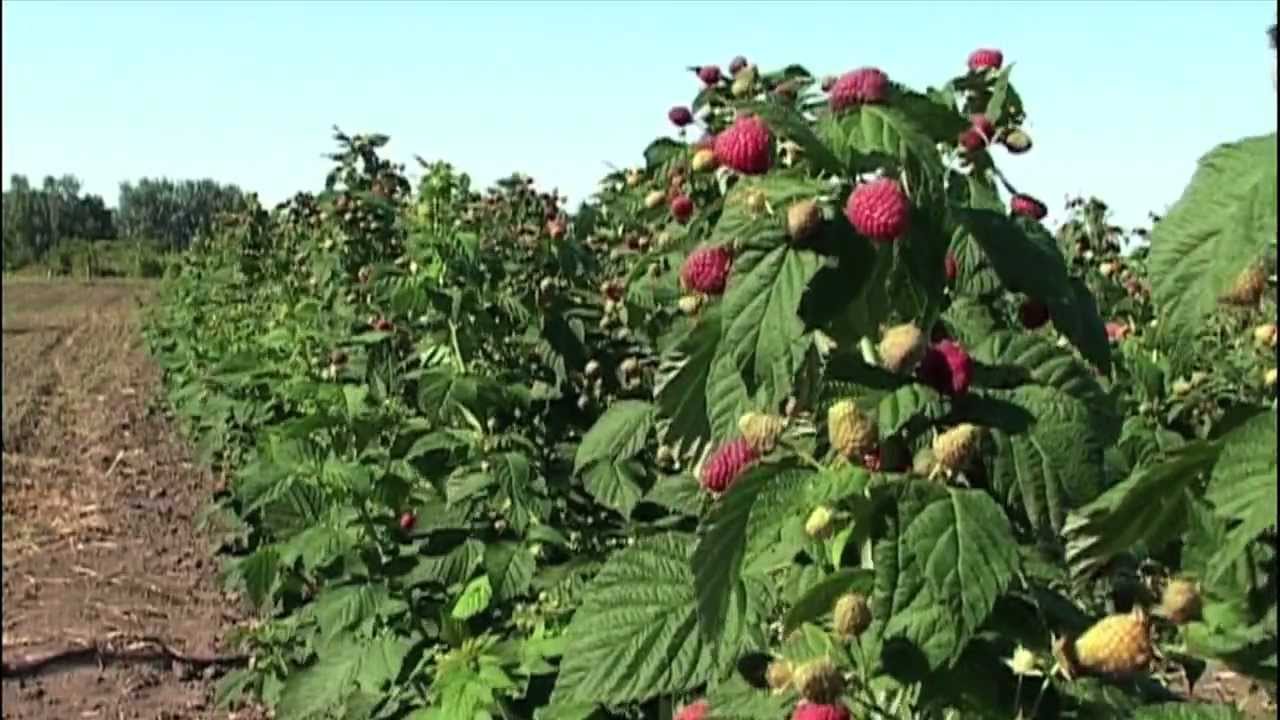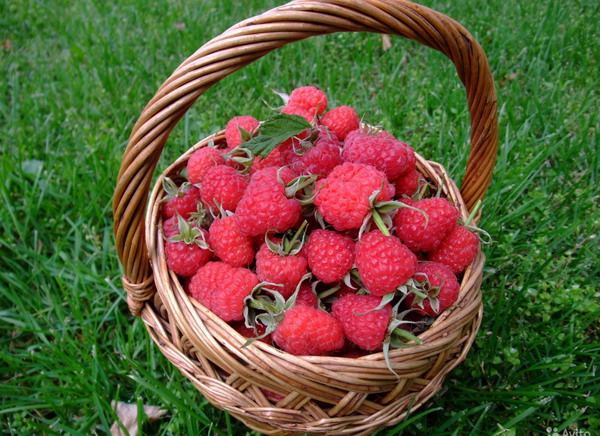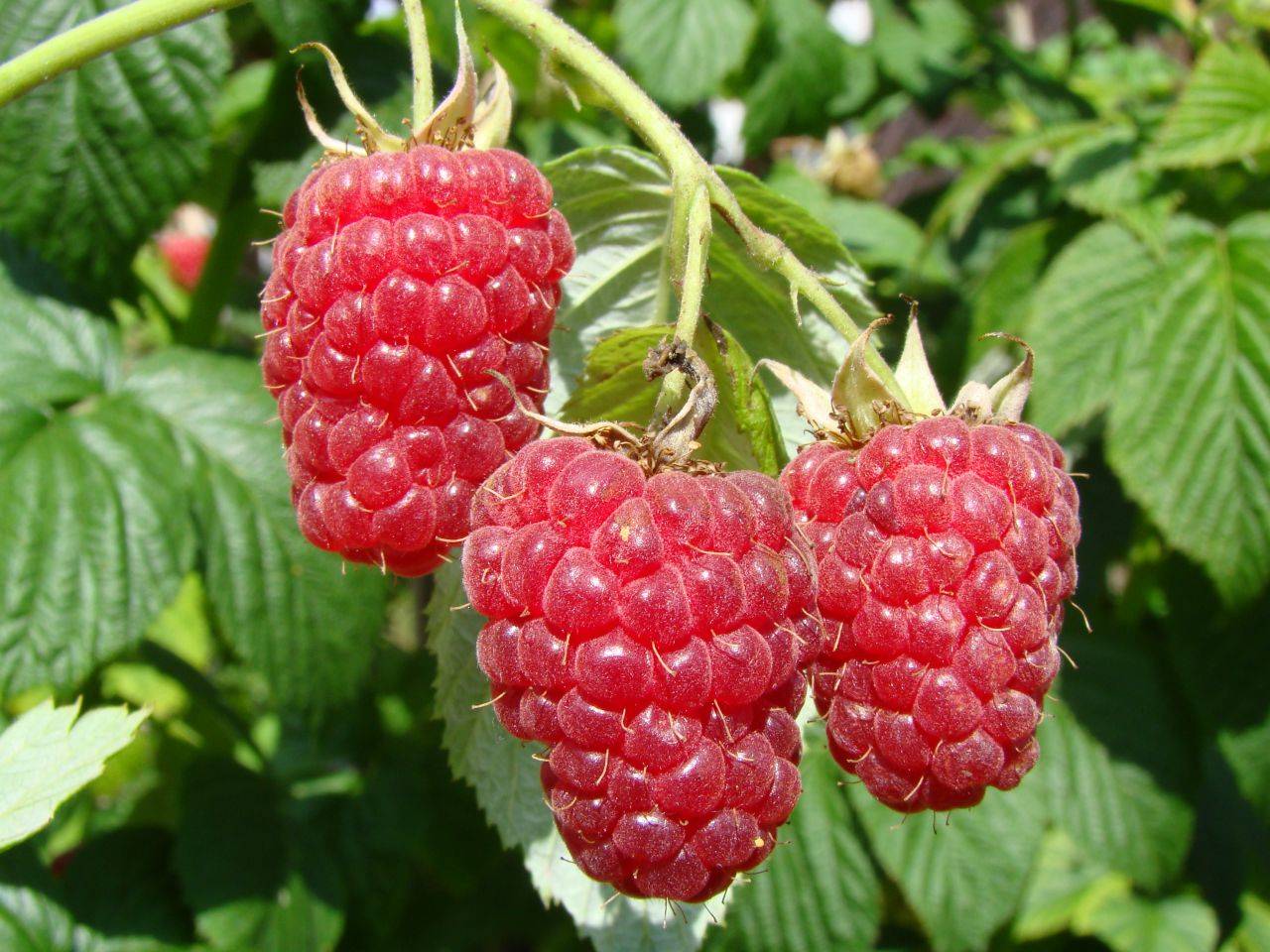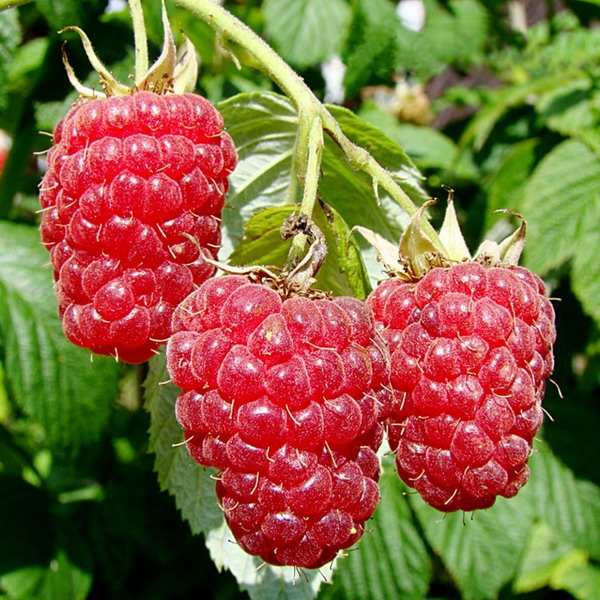Content:
True gardeners always follow the novelties of selection, therefore, they did not disregard the recently appeared result of crossing of 2 varieties: Rafzeter and Otm Bliss. Taking all the best from the "parents", Himbo top raspberries immediately gained popularity. A native of Switzerland has already firmly established himself on the garden plots of Russian landowners.
Characteristics of the raspberry variety
The description of the Himbo Top raspberry variety will interest the most avid gardeners. The berry is really remarkable:
- sprawling bush, vigorous (up to 2 m tall), with long lateral branches;
- in the first year it gives up to 7 replacement shoots, in the next - up to 12;
- the culture is not demanding on the soil, therefore it will take root in any area;
- the density of bright berries with a characteristic shine remains until the end of fruiting, they do not crumble when removed from the stalk;
- raspberries have a high taste due to their low acid content and high sugar content;
- the fruits have a persistent pleasant raspberry aroma;
- the berries are large enough - the weight of each varies between 5-8 g;
- by the end of the season, the fruits do not shrink, as is the case with other varieties;
- raspberry attracts with its productivity - in one summer you can take at least 3 kg from a bush; on an industrial scale, up to 20 tons are taken from 1 hectare.
Despite the fact that the Himbo Top raspberry begins to bear fruit a little later than its predecessors, about 10 days, the remontant bush manages to give 2 harvests per season. In June, you can already feast on delicious raspberries taken from last year's shoot.
Ripening of berries on annual shoots occurs in mid-August, they are harvested for 2 months. It is possible to increase yields if you hide the bushes in a greenhouse. Agro-industrial complexes grow this variety for sale in greenhouses in order to get high productivity (especially in the cold regions of the country).
Note! Another notable characteristic of raspberries is their high UV resistance. Therefore, the variety can be planted without risk in the sunniest areas, without fear of burns.
Raspberries also take root well in areas affected by late blight. The culture is not sick with rot, is not affected by fungal infections and bacteria. This is another argument in favor of planting a Himbo raspberry bush on your site.
Care features
The berry culture is unassuming, but in order to get high yields, you must adhere to the rules of agricultural technology. When choosing seedlings for planting, you need to look first of all at the root system: it must be well developed. If there are no shoots on the bush, this is not important, but the presence of at least 3 buds at the base is a prerequisite.
Landing conditions
You should not rely on the unpretentiousness of the culture; it is better to choose a well-lit place with loose soil for planting. Usually raspberries are planted along fences, but for Himbo top this is not an option - the bush needs space.
Additional Information. Given that the branches of raspberries are long, the row spacing should be at least 2.5 m.The distance between the bushes in one row is enough to maintain about 0.7 m.You can plant a berry field in trenches or separate pits with a depth of 0.45 m. dug in advance, 3 weeks before planting.
At the bottom, make a 10-centimeter pillow of compost or humus and the same amount of earth. Having set the seedling in the center, sprinkle it with earth. At the same time, make sure that the root neck rises above the soil. Having finished planting, all the bushes are watered.
Basic care includes:
- mulching with sawdust, straw, needles;
- watering;
- feeding.
Periodically, they loosen the soil in the raspberry field and weed the weeds.
Watering
Particular attention is paid to irrigation, which is carried out as the soil dries out. They should be abundant - throughout the entire depth of the root system. This procedure is especially important during the formation of ovaries and during the fruiting period. Otherwise, the berries will crumble.
But you should not be zealous either - an excess of moisture prevents the roots from breathing and assimilating nutrients. Despite the resistance of the variety to putrefactive diseases, constantly high humidity will disrupt immunity. If possible, it is recommended to install a drip irrigation system. This is the most efficient way, especially on large plantations.
The last watering of shrubs is carried out before preparing raspberries for wintering. This will allow the plant to survive frost more comfortably.
Top dressing
To increase productivity, give strength for development, the culture is periodically fed taking into account the following features:
- for each square meter of the berry, the first 2 years after the opening of the bushes, 15 g of urea is introduced; this will positively affect the acceleration of the growth of green mass;
- in the spring, you can also use an infusion of mullein, nettle or nitrogen-containing mineral fertilizer;
- after loosening in early spring, compost or humus is sprinkled around each bush;
- in summer and autumn, phosphate-potassium fertilizers are applied - 100 g of potassium sulfate and 130 g of superphosphate per 1 sq.m. berry.
The main dressing is combined with watering, introducing fertilizer directly under the root. Experienced gardeners keep wood ash and dolomite flour in reserve. These folk remedies are added to the soil during spring loosening.
Note! In summer, fertilizers are applied under each bush at intervals of 3 weeks. Mineral fertilizers can be alternated with organic matter. If the berry is broken on fertile soil, then potassium-phosphate fertilizers should be used once every 3 years.
Pest control
Although this variety is resistant to various diseases, it is recommended to spray the bushes with Bordeaux liquid during budding in order to scare off pests and avoid the appearance of powdery mildew. Insects are carriers of various infections.
It is also recommended to use copper sulfate (but not during the growing season), which will prevent the development of many diseases. The people also use decoctions of herbs and spraying the bushes with boiling water.
The raspberry is often annoyed by the weevil. They fight with baking soda or mustard. 1 tbsp powder is bred in a bucket of warm water and insisted for 12 hours, then the bushes are treated. Will scare away pests and needles used in mulching.
In addition, gall midges, leafhoppers, caterpillars, beetles, ticks and aphids can appear on raspberries. Before flowering, the berry is treated with chemicals such as "Karbofos", "Karate", "Iskra". In the future, only folk remedies can be used: infusions of tobacco dust, onion husks or garlic.
Pruning, garter raspberries
Due to the large berries, the long branches of the bush tend to the ground, so a garter on the trellis is necessary. Pillars are driven in at the edges of each row. If the section is long, then additional supports are dug in between the gaps. A dense rope or non-bending wire is pulled along the posts: one at a height of 60 cm, the other at 120 cm (you can add a third). It is advisable to arrange the branches on the garters in a fan-like manner.
Important! You cannot pinch the shoots, otherwise it will postpone the fruiting period and negatively affect the yield. But the clipping of excess shoots is required, it is carried out throughout the summer.On the bush itself, it is enough to leave 5 to 7 main branches. Cuttings are used to grow seedlings.
You cannot do without pruning in late autumn, preparing the bush for the winter. Most branches are cut to the very root. Fruiting shoots of this year are shortened, leaving 25 cm columns above the surface.
Wintering
When the harvest is completely over, the bushes are prepared for wintering. In the southern regions, shoots, which should still give the June harvest, are not cut off, but simply bent to the ground, securing with wire staples. Then they are covered with branches cut from trees or covered with foliage. Boards are laid on top.
If Himbo Top is grown in colder regions of the country and is not covered in greenhouses for the winter, the shoots are cut off completely, to the very base. After that, the remains of the bush are covered with a film, which is fixed at the edges with a load (bricks, metal pipes, etc.). In June, you won't have to wait for berries, but in August the raspberry will delight you with a bountiful harvest.
When winter is over, the raspberries are opened and the condition of the bush is checked. If the branches are frozen, they will have to be cut. After waiting for the young growth, thinning is immediately carried out. After that, the ground around the bush is loosened, fed and mulched.
The Himbo Top Repaired Raspberry is well worth cultivating in your garden. It is delicious fresh and makes mouth-watering jams. The berry perfectly tolerates frost, which will provide the family with useful vitamins for the whole winter.


















